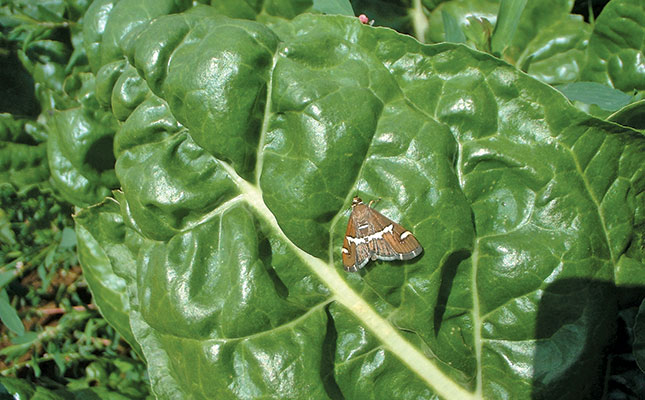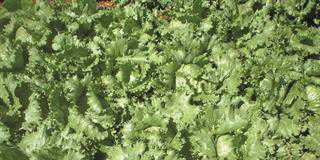
Photo: Bill Kerr
Cutworm
Most producers know how to deal with cutworm as it is a common pest that attacks many crops. The method is worth repeating, though, as many farmers are caught out by the sporadic nature of the pest.
The best option is to apply a pyrethroid with the herbicide when direct seeding. Avoid applying after transplanting; if leaf miner is in the area, the pyrethroid will kill the parasitoid wasps that prey on the miners, but have little effect on the leaf miner flies.
Hawaiian beet webworm
Another sporadic pest, this can do a lot of damage. It is usually controlled by a parasitoid wasp, but sometimes the pest is present with few or no wasps in the area to control it. By the time the wasps do appear, or increase in number, the crop might already be damaged and unmarketable.
You can control this pest fairly easily with insecticides, but, again, many of these are likely to kill off the wasps that prey on the webworm, as well as those that attack leaf miners, causing a flare-up of this pest.
The wasps that control the Hawaiian beet webworm are much larger than those that prey on the leaf miner, and easier to spot. They are about the same size as the wasp that controls diamondback moth larvae in brassicas.
Before the caterpillars appear, you will see delta wing moths with white transverse markings flying from the leaves when disturbed. If you see them, search carefully for the wasps. If they are there and you see only the occasional caterpillar, keep an eye out for a build-up and monitor the situation to determine whether action needs to be taken. If damage seems likely, apply a suitable insecticide that will kill caterpillars and not harm the parasitoids.
If you apply a broad- spectrum insecticide that harms wasps as well, more moths may enter the land from the initial infestation source and repeat sprays may be necessary. If you preserve the wasps, only one spray should be necessary.
Potato ladybird beetle
A very serious pest in some areas, especially early in the season, these closely resemble that good friend of the farmer: the aphid-eating ladybird, apart from having a duller colour. The pest usually follows the first spring rain.
It overwinters in clusters in the rough bark of eucalyptus trees, and I have even seen them hanging in clusters under the eaves of houses where I initially thought they were swallows’ nests.
Activated by the rain and summer weather, they immediately attack host plants, which include beetroot, potatoes and weeds such as Amaranthus and others.
They emerge en masse and can catch you by surprise, doing a great deal of damage within a day or two. If this pest is prevalent, the best course of action is to look out for it after the first spring rain.
Its feeding pattern is very neat, producing a lacework pattern on the leaf. It lays clusters of yellow eggs under the leaves. The larvae have conspicuous spines on their backs and eat in a similar manner to the beetles.
An effective treatment
Thiodicarb kills this pest, yet does minimal harm to beneficial insects. It does not remain active for as long as pyrethroids, though, and may need a repeat application a little later.











